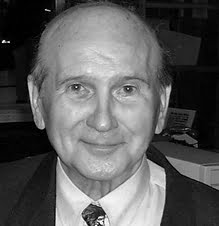Marcell Janosi
He was a teaching demonstrator at the Department of Mathematics of the Budapest University of Technology (BME) from 1951. From 1954 he worked in the technology development department of the Telephone Factory.
In 1955, he worked as a group leader engineer at the Communications Directorate of the Ministry of Metallurgy and Mechanical Industry (KGM) dealing with the objectives and introduction of new technological processes.
In 1957, he was the chief technologist of the Budapest Radio Engineering Factory (BRG). In the meantime, he undertook various designs; he built a diamond drilling plant equipped with automatic machines of his own design.
From 1960, he began working on tape recorder technology as the chief designer of BRG. His first work was the Calypso tape recorder, of which about 30 different types were designed.
He completed his correspondence studies at the Marx Károly University of Economics (MKKE) in 1965.
He began working in computer science in 1970. He directed the production of the SLK-4 type cassette data recorder, the EC 9006 cassette-to-magnetic tape converter, the MCD type micro floppy, the ABC 80 type cassette data storage for the Swedish PC, the MC 3810 type data storage (for Commodore, Sinclair, Atari, Acorn PCs), and the Fokgyem plotter to replace punched tape machines.
Among his creations, the MCD type micro floppy, the 3.0” so-called cassette floppy, stands out. He filed a patent for a new data storage device, the so-called cassette disk (or, as he called it at the time, a flexible hard disk).
Marcell Jánosi, known as the Rubik's Cube of the Hungarian hardware industry, forever wrote himself into the history of computer peripherals with a 3-inch floppy disk that was decades ahead of its time.
For his work in the domestic development of tape recorder technology, he received the State Prize of the Hungarian People's Republic, Class II, in 1975 (shared with Mihály Hegyi, Imre Kutassy, Gábor Machala, Csaba Somlai and Alajos Zártos).
- At the end of his life, Óbuda University accepted him as an honorary professor.
- At the initiative of the NJSZT, the Budapest City Council approved at its meeting of June 14, 2017, that the previously unnamed area opening from Szél Street in District III should be renamed Jánosi Marcell Square.
Created: 2016.06.20. 11:37
Last modified: 2024.04.30. 08:37

